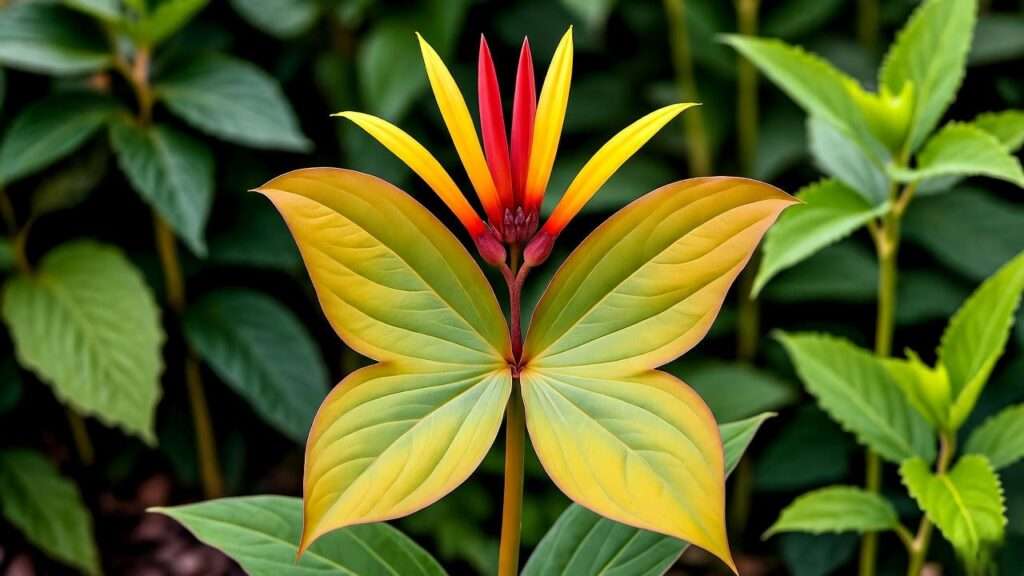Imagine transforming your garden or living room with a plant so striking it stops visitors in their tracks — the swallowtail plant, with its butterfly-shaped leaves and vibrant blooms, does just that! Known scientifically as Christia obcordata, the swallowtail plant is a tropical gem that captivates plant enthusiasts and eco-conscious gardeners alike. Whether you’re a beginner or a seasoned green thumb, this comprehensive guide will equip you with expert-backed strategies to grow a thriving swallowtail plant. From optimal light conditions to propagation techniques, we’ll cover every step to ensure your plant flourishes, attracting butterflies and adding elegance to your space. As a horticulturist with over a decade of experience and insights drawn from botanical research, I’m here to help you cultivate this unique plant with confidence. Let’s dive in! 🦋
What Is a Swallowtail Plant? 🦋
Botanical Overview
The swallowtail plant, Christia obcordata, is a tropical perennial celebrated for its heart-shaped or butterfly-like leaves, which feature intricate patterns of green, burgundy, and pink. Native to Southeast Asia, it thrives in warm, humid environments, making it a favorite for both indoor and outdoor gardening. Its delicate foliage and occasional small, pinkish blooms make it a standout in any collection. Often called the “butterfly plant,” it’s a member of the Fabaceae family, closely related to legumes. Its unique appearance has earned it a spot in specialty nurseries and pollinator gardens worldwide.
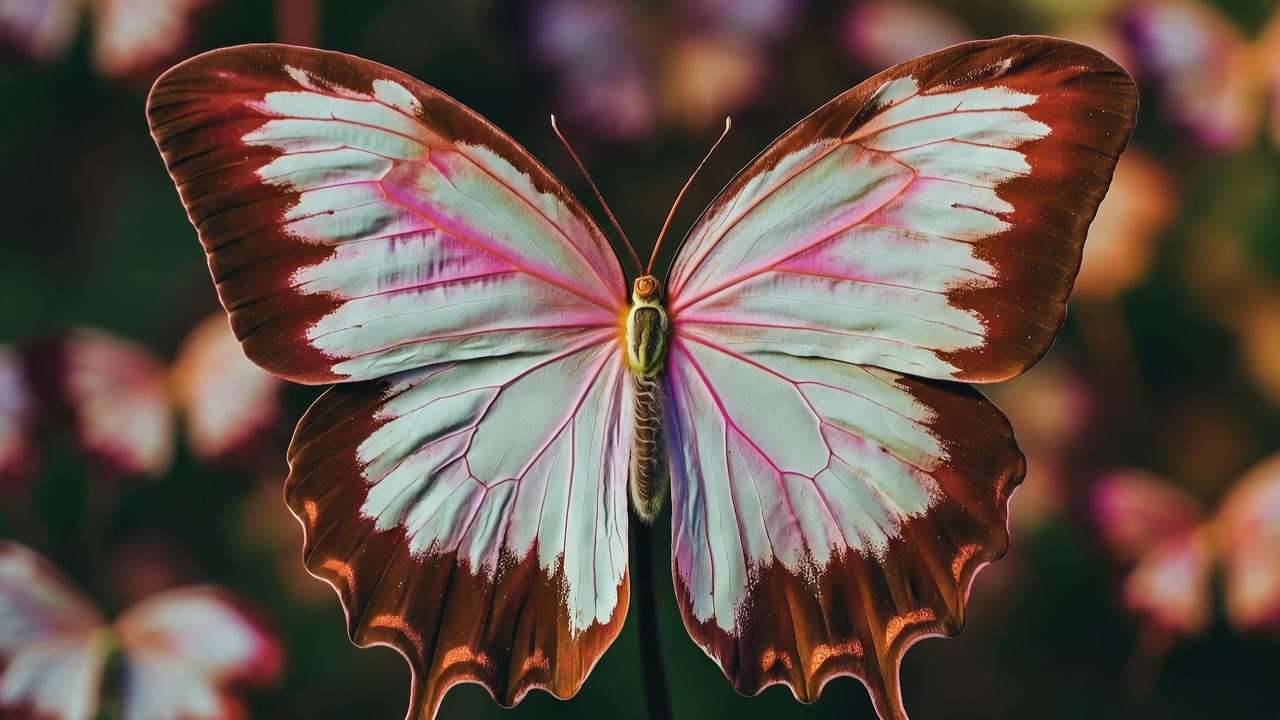
Why Grow a Swallowtail Plant?
Why choose a swallowtail plant? Beyond its aesthetic charm, it’s a magnet for butterflies, supporting local ecosystems and adding ecological value to your garden. Its compact size (typically 1–2 feet tall) makes it ideal for small spaces, such as apartments or patios. Whether grown in a pot or a garden bed, it offers versatility and low-maintenance appeal for gardeners of all levels. According to Dr. Emily Harper, a botanist at the Royal Botanic Gardens, “The swallowtail plant is a perfect blend of beauty and biodiversity, making it a must-have for sustainable gardens.”
Choosing the Right Environment for Your Swallowtail Plant 🌞
Light Requirements
Swallowtail plants thrive in bright, indirect light, mimicking their natural tropical habitat. Indoors, place them near east- or west-facing windows to avoid harsh direct sunlight, which can scorch their delicate leaves. Outdoors, partial shade is ideal — think dappled sunlight under a tree canopy. Adjust light exposure seasonally; in winter, supplement with a grow light if natural light is limited. A common mistake is placing the plant in deep shade, which can stunt growth and dull its vibrant colors.
Tip: Use a light meter app to ensure your plant receives 1000–2000 lux for optimal growth.
Temperature and Humidity
These tropical beauties prefer temperatures between 65–80°F (18–27°C). Avoid exposing them to drafts or temperatures below 55°F, as cold stress can cause leaf drop. High humidity (50–70%) is critical for healthy foliage. To boost humidity indoors, place a pebble tray filled with water beneath the pot or use a humidifier. Outdoors, mist the leaves during dry spells. Grouping plants together can also create a humid microclimate.
Soil Preferences
Swallowtail plants need well-draining, nutrient-rich soil to thrive. A mix of peat moss, perlite, and potting soil (2:1:1 ratio) works wonders, ensuring aeration and moisture retention without waterlogging. Avoid heavy, clay-based soils, which can suffocate roots and lead to rot. Test soil pH to maintain a slightly acidic range (6.0–6.5) for optimal nutrient uptake.
Checklist:
- ✅ Use a pot with drainage holes.
- ✅ Mix perlite or sand for aeration.
- ✅ Check soil moisture before watering.
Planting and Propagation Made Easy 🌱
How to Plant a Swallowtail Plant
Planting a swallowtail plant is straightforward with the right approach. Choose a pot 8–12 inches in diameter with drainage holes for indoor plants. For outdoor planting, select a shaded garden bed with rich, loamy soil. Spring or early summer is the best time to plant, as warmer temperatures encourage root establishment. Dig a hole twice the size of the root ball, place the plant, and backfill with your prepared soil mix. Water thoroughly after planting to settle the roots.
Step-by-Step:
- Fill the pot or bed with a well-draining soil mix.
- Position the plant so the root crown sits just above soil level.
- Water until the soil is evenly moist but not soggy.
Propagation Techniques
Propagating swallowtail plants is a rewarding way to expand your collection or share with friends. The most effective method is stem cuttings:
- Select a healthy, non-flowering stem with 3–4 leaves.
- Cut just below a node using sterilized scissors.
- Dip the cut end in rooting hormone (optional) and plant in a moist peat-perlite mix.
- Cover with a plastic bag to retain humidity and place in indirect light.
- Roots should form in 2–3 weeks; transplant once roots are 1–2 inches long.
Division is another option for mature plants. Gently separate the root ball into sections, ensuring each has roots and foliage, and replant immediately. Avoid overwatering cuttings or divisions, as this can lead to rot.
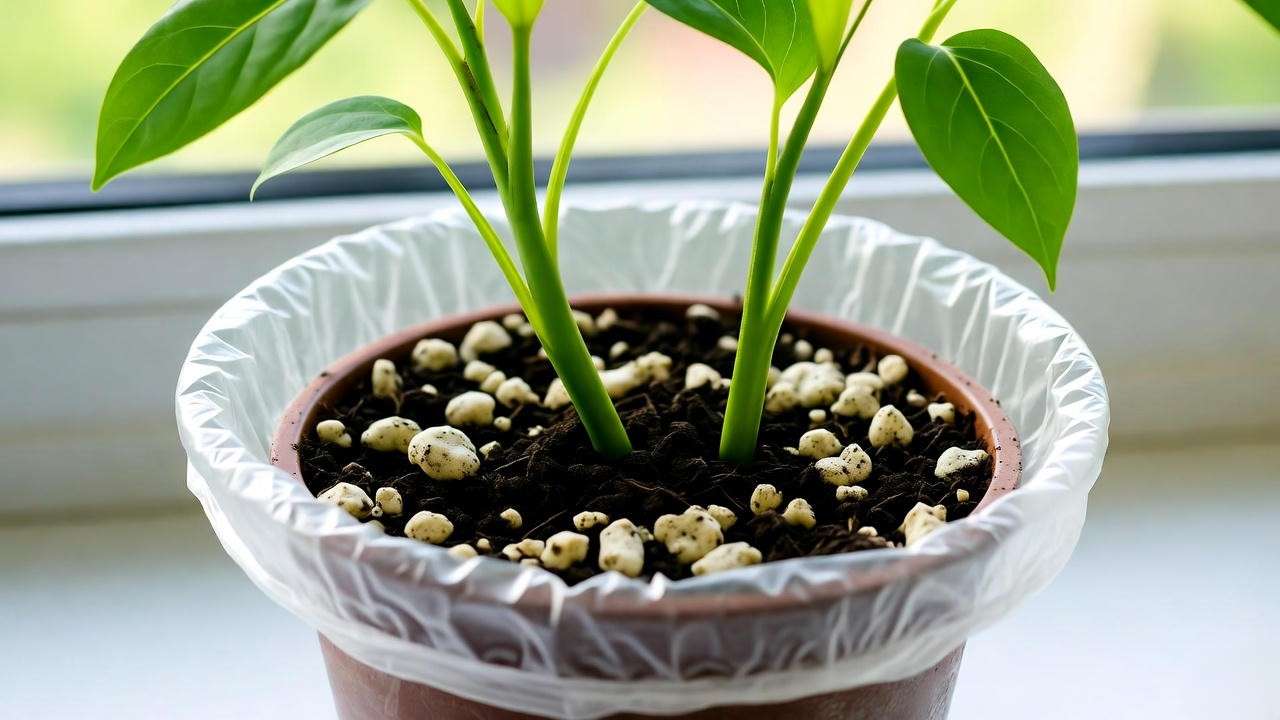
Case Study: Sarah, a home gardener in Florida, propagated her swallowtail plant using stem cuttings. By maintaining high humidity and consistent moisture, she achieved an 80% success rate, growing three new plants in just a month!
Essential Care Tips for a Thriving Swallowtail Plant 🌿
Watering Best Practices
Swallowtail plants prefer consistently moist soil but are sensitive to overwatering. Water when the top inch of soil feels dry, typically every 5–7 days indoors or more frequently outdoors in hot weather. Use room-temperature water to avoid shocking the roots. Signs of overwatering include yellowing leaves or a mushy stem, while underwatering may cause wilting or crispy leaf edges. Always empty saucers to prevent root rot.
Pro Tip: Use a moisture meter to take the guesswork out of watering.
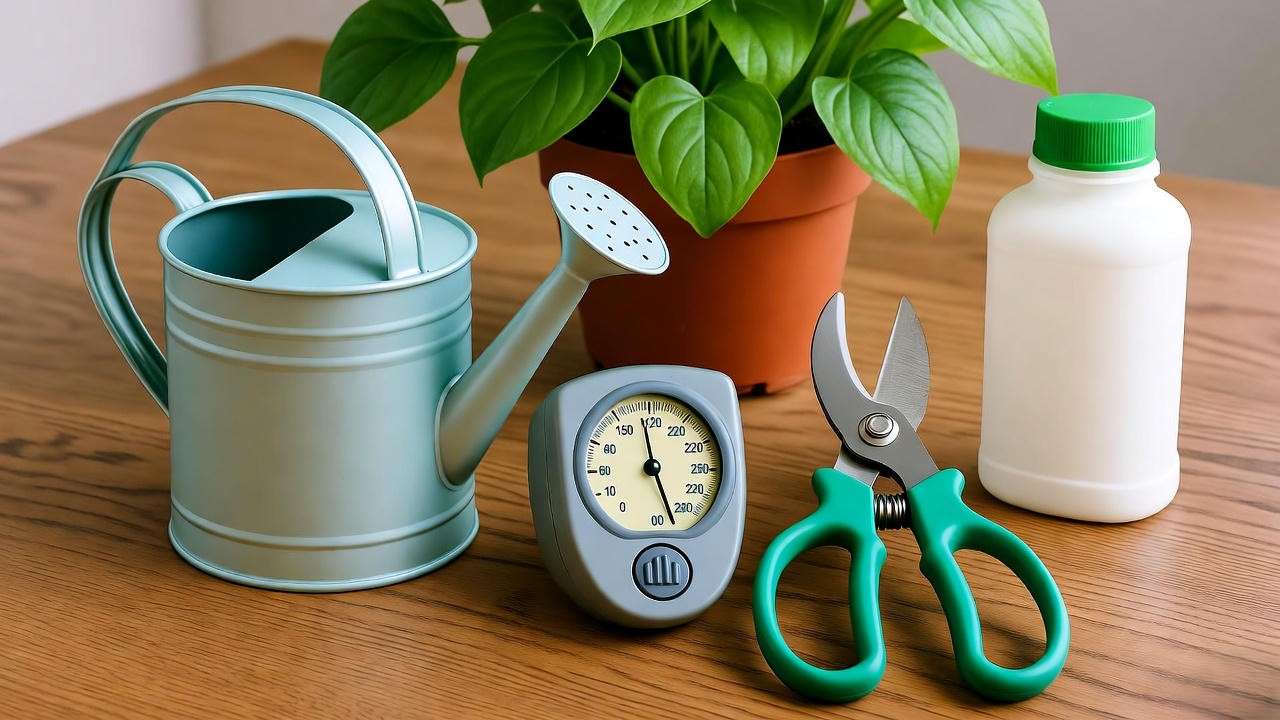
Fertilizing for Growth
Feed your swallowtail plant with a balanced, water-soluble fertilizer (10-10-10) every 4–6 weeks during the growing season (spring and summer). Dilute to half-strength to avoid burning the roots. Organic options like compost tea or fish emulsion are excellent for eco-conscious gardeners. In fall and winter, reduce or stop fertilizing as the plant enters dormancy.
Pruning and Maintenance
Regular pruning keeps your swallowtail plant bushy and vibrant. Trim leggy stems in spring to encourage branching, using clean, sharp shears. Remove yellow or dead leaves promptly to prevent disease spread. Wipe leaves with a damp cloth to remove dust and enhance photosynthesis. Check for pests during maintenance to catch issues early.
Seasonal Care Calendar:
- Spring: Prune, fertilize, and propagate.
- Summer: Monitor watering and humidity.
- Fall: Reduce fertilizer; prepare for dormancy.
- Winter: Protect from cold; maintain humidity.
Common Problems and How to Solve Them 🐞
Pest Management
Swallowtail plants can attract spider mites, aphids, or whiteflies, especially in dry conditions. Look for webbing, sticky residue, or tiny insects on leaves. For organic control, spray with neem oil or insecticidal soap every 7–10 days until pests are gone. Chemical pesticides are a last resort; always follow label instructions. Increase humidity to deter pests naturally.
Disease Prevention
Root rot, caused by overwatering, is the most common disease. Ensure proper drainage and avoid letting the plant sit in water. Fungal leaf spots can occur in overly humid, poorly ventilated spaces. Improve air circulation with a small fan or by spacing plants apart. Remove affected leaves immediately to prevent spread.
Troubleshooting Yellow Leaves or Drooping
Yellow leaves often indicate overwatering, low light, or nutrient deficiency. Drooping may signal underwatering or temperature stress. Use this checklist:
- Check soil moisture: Adjust watering if too wet or dry.
- Assess light: Move to brighter, indirect light if needed.
- Inspect roots: Repot if root rot is suspected.
- Test nutrients: Apply fertilizer if leaves are pale.
Mini FAQ:
- Why isn’t my swallowtail plant blooming? Low light or insufficient nutrients may be the cause. Move to a brighter spot and fertilize monthly.
- Can it survive low light? It tolerates moderate light but may lose vibrancy. Supplement with a grow light.
Designing with Swallowtail Plants in Your Space 🏡
Indoor Styling Ideas
The swallowtail plant’s delicate, butterfly-like leaves make it a showstopper in indoor settings. Its compact size and vibrant foliage suit a variety of decor styles, from bohemian to minimalist. Try placing it in a hanging basket to showcase its cascading growth, or feature it in a glass terrarium for a modern touch. A ceramic pot with neutral tones can highlight the plant’s colorful leaves. Pair it with complementary plants like pothos or calathea to create a lush indoor jungle. Position it on a shelf near a bright window to draw attention without overwhelming the space.
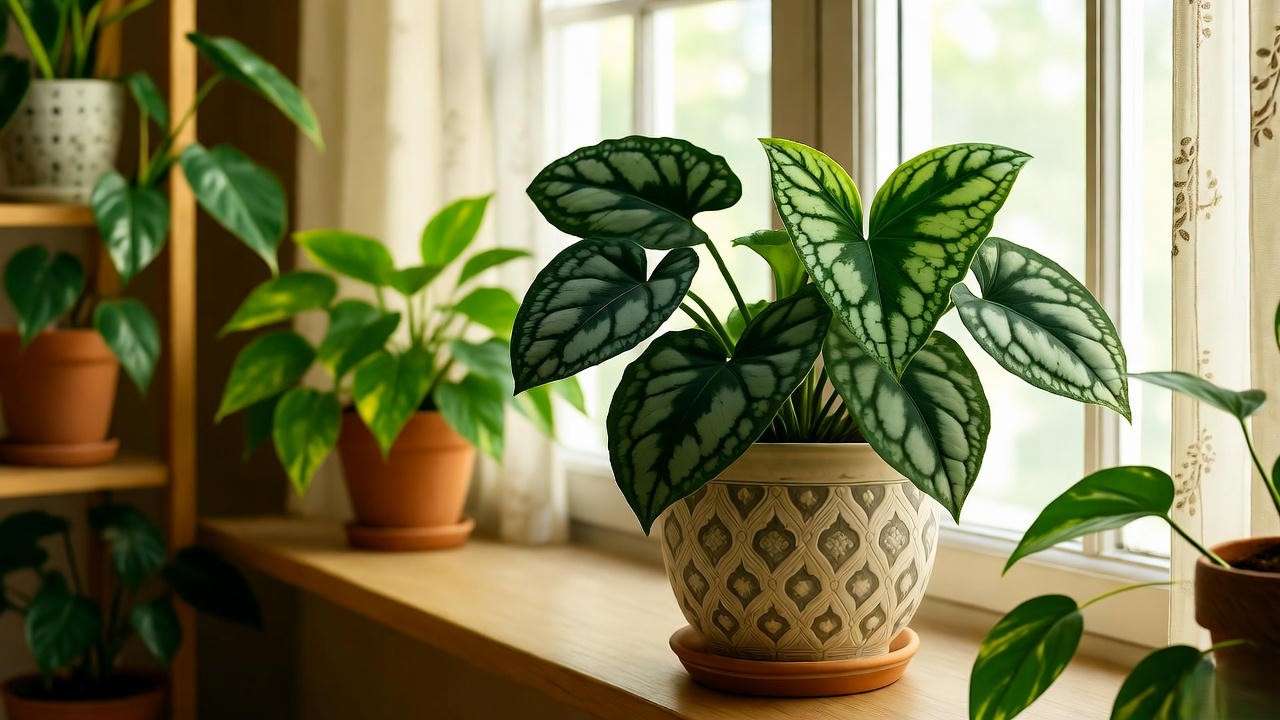
Styling Tip: Use a decorative plant stand to elevate your swallowtail plant, adding height and visual interest to your room.
Outdoor Landscaping Tips
In outdoor settings, swallowtail plants shine in pollinator gardens or shaded patios. Their ability to attract butterflies makes them a natural fit for eco-friendly landscapes. Plant them in clusters along garden borders or mix them with other butterfly-attracting plants like milkweed or lantana for a vibrant, wildlife-friendly display. They thrive in shaded areas under taller plants or trees, where dappled sunlight mimics their tropical origins. For small spaces, consider a container garden on a balcony or terrace, using large pots to create a focal point.
Example: Combine swallowtail plants with native wildflowers in a butterfly garden to boost biodiversity and create a stunning visual effect.
Visual Aid: Include high-quality images of swallowtail plants in various settings, such as a cozy indoor corner or a lush garden bed, to inspire readers.
Advanced Care Tips for Expert Gardeners 🌟
Optimizing Bloom Cycles
While swallowtail plants are primarily grown for their foliage, their small, pinkish blooms add extra charm when conditions are right. To encourage blooming, maintain consistent bright, indirect light and fertilize with a phosphorus-rich fertilizer (e.g., 5-10-5) during the growing season. Pinching back stems in early spring can stimulate flower production by promoting bushier growth. Avoid sudden environmental changes, as stress can inhibit blooms. Dr. Maria Chen, a tropical plant specialist, notes, “Consistent care and slight light adjustments can significantly enhance the swallowtail plant’s blooming potential.”
Overwintering Swallowtail Plants
In colder climates (below 55°F), swallowtail plants require protection to survive winter. For outdoor plants, bring potted specimens indoors before the first frost. Place them in a warm, humid spot with bright light, such as a south-facing window. For garden-bed plants, apply a thick layer of organic mulch (e.g., straw or bark) to insulate roots, and cover with a frost blanket during cold snaps. Indoors, maintain humidity with a humidifier to prevent leaf drop. Reduce watering and stop fertilizing during dormancy to mimic the plant’s natural cycle.
Expert Tip: Check root health before overwintering to ensure no rot or pests compromise the plant’s recovery in spring.
Environmental and Ecological Benefits of Swallowtail Plants 🌍
Supporting Pollinators
Swallowtail plants are a boon for pollinators, particularly butterflies, which are drawn to their nectar-rich blooms and foliage. By including them in your garden, you support local ecosystems and help combat declining pollinator populations. According to a 2023 study by the Xerces Society, butterfly-friendly plants like the swallowtail contribute to biodiversity by providing critical habitats. This makes them an excellent choice for gardeners passionate about conservation.
Sustainable Gardening Practices
Growing swallowtail plants aligns with eco-conscious gardening trends. Their low water needs (once established) and ability to thrive in organic soil mixes make them a sustainable choice. Pairing them with rainwater collection systems or compost-based fertilizers further reduces your environmental footprint. Additionally, their role in attracting pollinators supports food security by aiding in the pollination of nearby crops and wildflowers.
Call-to-Action: Join a local pollinator conservation group or share your swallowtail plant photos on social media with hashtags like #ButterflyGarden or #EcoGardening to inspire others.
Frequently Asked Questions (FAQs) ❓
Q1: How often should I water my swallowtail plant?
Water when the top inch of soil feels dry, typically every 5–7 days for indoor plants or more frequently for outdoor plants in hot weather. Ensure proper drainage to avoid root rot. See the “Watering Best Practices” section for more details.
Q2: Can swallowtail plants grow in low-light conditions?
They tolerate moderate light but thrive in bright, indirect light. Low light may cause leggy growth or faded colors. Use a grow light to supplement if needed, as discussed in “Light Requirements.”
Q3: What’s the best way to propagate a swallowtail plant?
Stem cuttings are the most reliable method, with an 80% success rate when done in a humid, well-draining medium. Refer to the “Propagation Techniques” section for a step-by-step guide.
Q4: Are swallowtail plants pet-safe?
Swallowtail plants are generally non-toxic to pets, but it’s best to keep them out of reach to prevent ingestion, which could cause mild stomach upset. Consult a veterinarian if concerned.
Q5: How do I revive a struggling swallowtail plant?
Diagnose the issue using the troubleshooting checklist in “Common Problems.” Adjust watering, light, or humidity as needed, and prune damaged leaves to encourage recovery.
Conclusion and Call-to-Action 🌼
Growing a thriving swallowtail plant is a rewarding journey that brings beauty, biodiversity, and joy to your home or garden. By following this guide’s expert tips — from choosing the right light and soil to mastering propagation and pest control — you’ll cultivate a vibrant plant that attracts butterflies and elevates your space. Whether you’re a beginner or an experienced gardener, the swallowtail plant’s unique foliage and ecological benefits make it a must-have. Share your swallowtail plant success stories in the comments or on social media with #SwallowtailPlantCare, and inspire others to grow this tropical gem! 🌿
For more plant care inspiration, explore our related articles on “Top 10 Butterfly-Attracting Plants” or “Indoor Plant Care 101.” Subscribe to our newsletter for weekly gardening tips from horticultural experts, backed by research from institutions like the Missouri Botanical Garden. Happy gardening! 🦋

